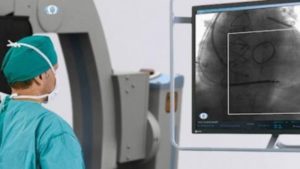Radiology is a specialized task. Radiologists interpret the images digitally displayed on device screens. Exposure to the screen radiations for hours eventually harms the radiologists. Some specialized methods make this exposure higher, enhancing the risks for the specialists. A recent study has addressed this matter which lacked the attention it needed for a long time.
The Research
The renowned journal interventional and Vascular Radiology recently published a startling fact. The study published has confirmed that the risk of radiation damage increases when radiologists perform fluoroscopy-based methods of intervention. Therefore, specialists involved n such practices should be more particular about keeping the risks at the lowest possible level.
The Law
The federal law indeed provides for such exposures consequent upon occupational patterns. However, some of the laws need immediate revision as they have remained the same since 1991. NCRPM and ICPR have been pleading for the revisions for quite some time. However, the emphasis has been much effective so far.

The Findings
Radiologists experiencing ionizing radiations may suffer from problems like cataracts, circulatory diseases and cancer. The fatality of the impacts calls for immediate attention. Also, researchers should conduct surveys and studies to bring out the truth associated with the long-term effect of these radiations.
David Borrego is a PhD and works with the National Institutes of Health and National Cancer Institute. David and the coauthors remarked that studies based on objective methods to streamline the long-term impacts of such radiations on radiologists are still numbered.
To conduct the study, the Borrego and team cited the annual dose report for three years from 2009 to 2015 with 2012 in between. The data had records of 77 physicians and 455 non-physicians. Out of these 169 records and 698 records were considered respectively.
The dose equivalent median for the physicians using FGI methods turned out to be three times more than other colleagues. The study also focused on parameters like the use of eye protectors during work hours. However, the final words of the authors confirmed that without the eye protectors, the damage could have been more severe.
The prevailing limit for annual occupational dose under standards for Protection against radiation is 150 mSv. NCRPM and IRCP have recommended lowering the limits further to 50 mSv. The study did not have cases where the dose was more than the stipulated limit. However, the exposure has increased over the years.
The authors further mentioned that working in an environment, that is high in radiation, needs not always conducive to high occupational doses. Through training programs provided to the radiology department’s stakeholders, the dose can be kept low. This practice will also nurture a radiation protection environment.
At Sepstream®, we offer the best imaging solutions at affordable prices. Go through our list of AI-integrated, intuitive software-based solutions for faster and flawless diagnosis. Our team of experts remains available for any help you need at any time.